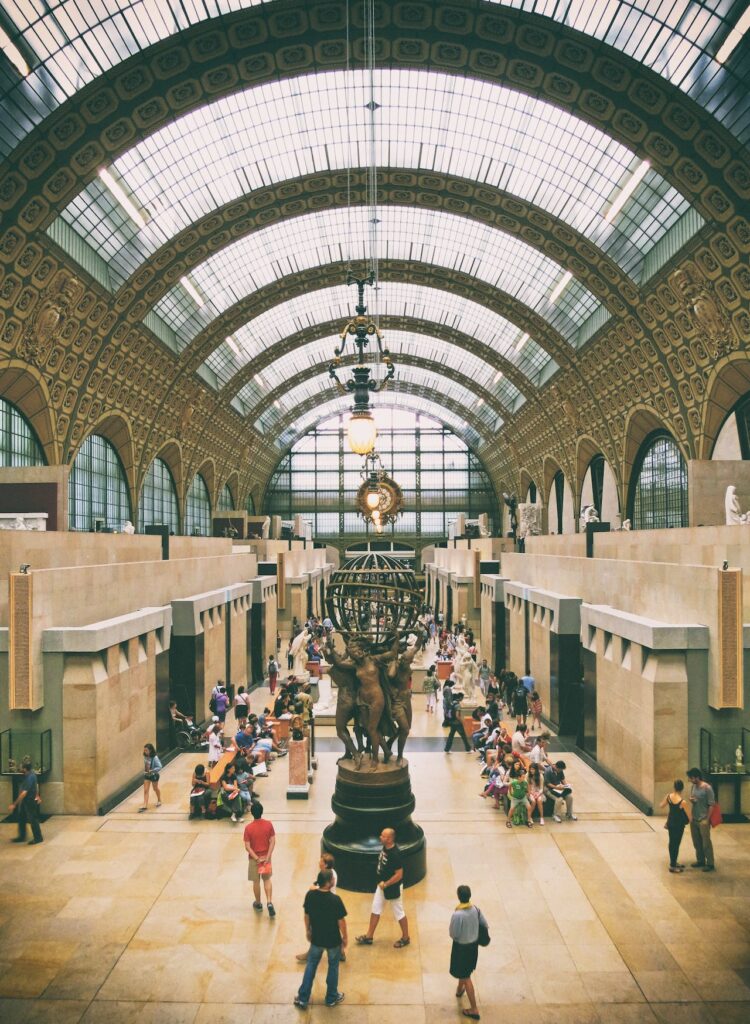Planning is the key ingredient to success. When going on a trip, it’s important to start planning a month ahead of the actual date; it saves a lot of time. However, France is an adventurous country and it’s important that you know how to plan a trip to France before embarking on it.
Furthermore, France is located in western Europe and it is also the largest discontiguous undivided economic zone in the world. How do you then plan a trip to France? Firstly, you must decide when to go, after which you choose your destination, and then you book your transportation and accommodation.
Additionally, you must ensure your travel insurance is ready, and you must plan out all activities to be carried out. In this article, we’ll focus on how to plan for a trip to France, the cost of traveling and some places to visit in France.
9 Steps On How To Plan A Trip To France

France is a very beautiful country with many tourist centers, attractions, cultures, and cuisines to explore. Here are the 9 steps on how to plan a trip to France:
1. Decide When To Go
Is this your first time planning a trip to France? I know it can be a bit confusing; that’s why we are here to help you.
The best time to visit France depends on what you want to do, what you want to see, and where you want to go.
However, the most suitable time to visit France is in late spring (April–May), summer (June–August), or autumn (September–October). Spring and fall normally have good weather and few crowds (for individuals who don’t like a crowded environment) and are perfect for sightseeing and tours.
Summer is a time for festivals, reliable weather, long opening hours at sight, beach holidays and lavender fields. Due to the favorable weather in July and August, a lot of people love to travel during the summer, thereby causing a spike in travel costs. Also, there would be a large crowd.
Traveling during the winter provides skiing opportunities and festive markets. The weather is milder in the south and colder and wetter in the north. During winter, you can travel to cities like Paris, Nice, and Lyon, but smaller cities and villages may have limited tourist activities and shorter hours at sights.
You may also want to avoid peak tourist seasons and holidays to save money and avoid crowds.
2. Choose Your Destination
The second step on how to plan a trip to France is to choose your destination. France has many cities and regions that you might be attracted to. If this is your first time planning a trip, choosing a destination might be a bit challenging, but you can’t afford to skip Paris.
Paris is one of the most popular cities and the capital of France, where many activities take place. There are other popular places in France, which include île-de-France, Provence and the French Riviera, Normandy and Brittany, Bordeaux and the southwest, and Alsace and the east. Although it’s good to focus on two to three regions that are popularly known for the reason for your trip.
3. Book Your Transportation
Traveling by plane is a popular means of transportation. However, it’s possible to travel to France by train, bus, or car, depending on your budget and where you reside.
If you are traveling by air, there are affordable flights you can take to France, such as the Ethiopian airline. You can also compare several airlines and book to find a more affordable one.
If you are traveling by train, you can take advantage of the high-speed TGV trains that connect major cities in France and Europe. You can also use local trains, buses or car rentals to get around within France. It’s important to book your transportation in advance.
4. Book Your Accommodation
After you’ve decided when to travel, where to travel and the means of traveling, the next item on your list is accommodation. Accommodation is another important aspect to consider when planning a trip to France. If you don’t have any family members, relatives, or friends to stay with, you can opt for a hotel.
We’ve compiled a list of budget-friendly hostels in Paris; they include
Hotel des Nations St-Germain: This hotel is located in the Latin Quarter, close to many tourist centers, restaurants and metro stations. Its rooms and conveniences are very spacious and comfortable. It also provides free wifi for its users, air conditioning and flat-screen TVs. The price per night is $79.
The Hoxton: It is a stylish and trendy option in the 2nd arrondissement, near the Louvre and the Opera. It also has spacious and comfortable rooms with vintage decor, free Wi-Fi, and minibars. It has a restaurant, a bar and a courtyard. The price per night is $188.
Generator Paris: This hostel is a great choice for backpackers and solo travelers. It provides dorms and private rooms with suite bathrooms, free Wi-Fi and lockers. The hostel also has a rooftop terrace, a bar, a cafe and a lounge. The price per night is $25.
Note that you are to search for accommodation close to your destination.
5. Get Travel Insurance
Travel insurance is very important for any trip outside your country, whether short or long. It’s another way to guarantee protection from unexpected costs and risks.
Travel insurance is a type of insurance that covers the diverse risks and losses that are associated with your travel, which include medical emergencies, travel delays, trip cancellations, lost or stolen luggage and lots more. This will help you reduce the financial burden of any emergencies that may hinder your trip.
There are different types of travel insurance plans; they include: single trip, which covers just one specific trip, annual, which covers multiple trips; rental car, which covers damage or theft of a rental car while traveling; medical, which covers your medical expenses; and trip interruption, which covers additional costs in case your trip is cut short. It’s best if you choose the one that best suits your needs and budget.
6. Plan Your Activities
It’s best to plan your activities according to preference, interest, and time, as there are a lot of activities in France. If possible, write them down according to their scale of preference. Some activities you can engage in include visiting museums, monuments, castles, cathedrals, gardens, and lots more. You can also enjoy outdoor activities such as hiking, biking, kayaking, skiing and lots more. Furthermore, you can also experience the French cuisine, wine and nightlife.
7. Pack Your Bags
Packing for France can vary depending on the season, region and activities you plan to do. In general, you should pack light and versatile clothing that can be layered, mixed and matched. You should also bring comfortable shoes, a rain jacket, a hat, sunglasses and sunscreen. You may also need some winter gear if you are going skiing or visiting the mountains. Don’t forget to pack your passport, visa (if required), travel documents, money, and electronics.
8. Learn Some French
When going to France, you need to learn some basic French that will help you communicate to people. As much as you can get by with English in most tourist areas, learning some basic French can enhance your trip and help you communicate with locals. French is the official language of France and is spoken throughout the country. You can learn some common words and phrases, such as greetings, numbers, directions, and polite expressions. You can also use a phrasebook, a dictionary, or a translation app to help you with the language.
9. Have Fun
The last and most crucial step is to have fun and seize every moment in France. France is a beautiful country with a whole lot of fun, people, attractions, and tourist centers, and you are sure to have a memorable and amazing time there.
How Much Does It Cost To Travel To France?
The cost of traveling to France depends on many factors, such as the season, the destination, the duration, and the style of your trip. According to some researchers, an average one-week trip to France for two people in 2024 will cost around $5,000. This includes accommodation, flights, food, drink, activities and transportation. However, this is only an estimate and your actual expenses may vary depending on your choices and preferences.




